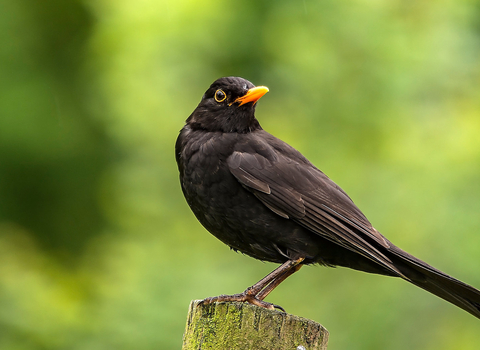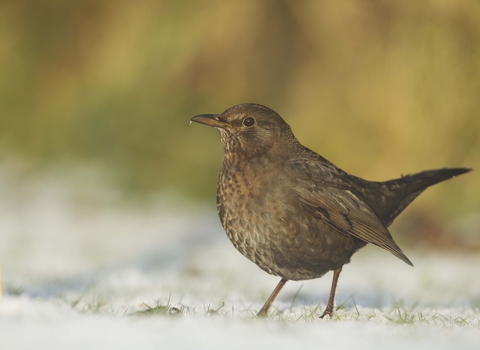
Bob Coyle

©Mark Hamblin/2020VISION
Blackbird
A much-loved garden bird, the blackbird is famous for its harmonious song. In winter, our resident birds are joined by migrants from Scandinavia and the Baltics.
Scientific name
Turdus merulaWhen to see
January to DecemberSpecies information
Statistics
Length: 24cmWingspan: 36cm
Weight: 100g
Average lifespan: 3 years
Common. Classified in the UK as Green under the Birds of Conservation Concern 5: the Red List for Birds (2021). Protected in the UK under the Wildlife and Countryside Act, 1981.
About
A familiar thrush, the melodious blackbird is a common sight in gardens, parks and woodlands across the UK. Blackbirds are especially fond of feeding on lawns and can be seen with their heads cocked to one side, listening for earthworms. They also feed on insects and berries - leave out a few old apples or plant berry-producing bushes in the garden to attract these delightful birds.How to identify
Male blackbirds are unmistakable - they are entirely black, with a yellow bill and yellow ring around the eye. Females are dark brown, with streaking on the chest and throat. Juveniles are also dark brown but covered with gingery streaks.Distribution
Widespread.Did you know?
One of our commonest garden birds, blackbirds are actually partially migratory within the UK (Scottish populations visit Northern Ireland, for example) and strongly migratory within Europe, with birds from Scandinavia and the Baltics joining our residents in winter.Watch
blackbird (https://vimeo.com/413559501)
Blackbird by Tom Hibbert
